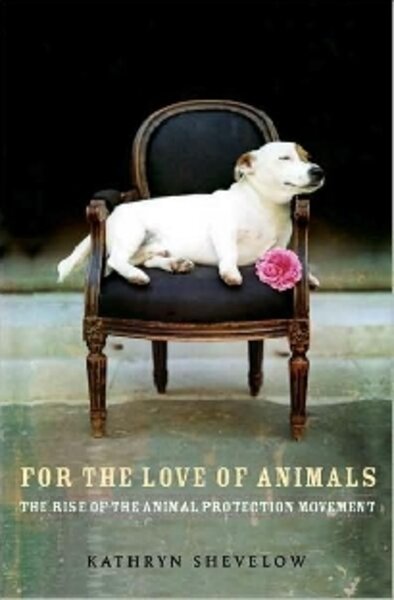For the Love of Animals
Loading...
History has forgotten the shocking cruelties unleashed on the animals of Britain in centuries past. But their grim legacy remains in the language we speak.
The word “cockpit” originally referred to the spaces where chickens fought each other to the death. “Bulldogs” – ancestors of today’s pit bulls – attacked enraged bulls in front of bloodthirsty crowds of peasants and aristocrats. Even the word “hangdog,” now used to describe facial expressions, traces its origin to the unhappy fate of canines put on trial.
While many people adored their house pets just as they do now, few cared about the horrors unleashed on animals in a place considered “the world’s cruelest country.” But then humanity began to develop a heart. People started to see animals as something more than property. And cruelty ceased to be seen as a personal right.
“The rescued dogs, cats, rabbits and horses who live with so many of us today ultimately owe their survival” to British reformers, writes Kathryn Shevelow in For the Love of Animals: The Rise of the Animal Protection Movement. These men and women, she writes, “forced the law for the first time to become responsive to the plight of animals.”
“For the Love of Animals” provides a perceptive and eye-opening look at how the British people developed a sense of obligation toward the defenseless creatures in their care. Through vivid anecdotes, Shevelow, who is a professor of British literature at the University of California at San Diego, brings readers on a tour of Britain’s massive contradictions and paints memorable portraits of the motley crew that invented the animal-rights movement.
During Shakespeare’s time, and for centuries afterward, aristocrats adored their coddled lapdogs and fancy birds while half-starved mongrels roamed the streets and children tortured cats in public. Cockfighting and “baiting” – pitting ferocious dogs against creatures ranging from monkeys to ducks – provided popular entertainment for all classes.
Many of the stories of animal abuse in “For the Love of Animals” are disturbing, and Shevelow helpfully advises readers which chapters they can skip to avoid them. Happily, there is also much to appreciate, including tales of the activists who spoke up despite endless ridicule.
Early on, an eccentric duchess dared to question the prevailing assumption that animals are stupid because they can’t speak. Speech isn’t a sign of intelligence considering all the dumb things that people say, she argued. For her troubles (and her feminism), later critics dubbed her “Mad Madge.”
And so it went. A minister who dared to interpret scripture as frowning on animal cruelty was called insane. Members of Parliament who tried to ban bull-baiting were called moralistic meddlers who couldn’t stand the idea of anyone having a good time. What would be next, critics cried, a ban on fox hunting? (Well, yes, but it took until 2004.)
During debate over a law to ban cruelty to horses, members of Parliament howled with glee when someone suggested that dogs might be next. An even wilder notion – the protection of cats – prompted hoots of laughter.
But the voices for animal rights gained influence. They found reasons for mercy in the Bible, in philosophy, and in numerous reform movements, including the fight against slavery.
Shevelow livens her tale with stories of Europe’s obsessions with half-human monsters and complex mechanical animals. She also finds plenty of unusual characters among the reformers, including an early vegetarian who still managed to be fat as a house and Richard “Hair-Trigger Martin,” an Irish leader who challenged a man to a duel over the cold-blooded murder of a gentle wolfhound that didn’t even belong to him.
Despite accusations that he was a “blustering and blundering blockhead,” Mr. Martin founded the influential Society for Prevention of Cruelty to Animals, which gained royal patronage in 1840 and remains active to this day.
While Shevelow does a thorough job of tracking the animal-rights movement’s evolution in Britain, she gives short shrift to events elsewhere. US readers are left to research for themselves how the British movement affected animal rights on this side of the pond.
Some readers may find “For the Love of Animals” a bit academic for their tastes, and many will note that the cover photo of an adorable dog on a chair has nothing to do with anything other than savvy marketing.
Overall, however, this book is thought-provoking and inspiring, reminding readers how much has – and hasn’t – changed over the centuries. The animals treasured by so many of us continue to fall victim to cruelty and abuse. But thanks to the efforts of those who withstood withering attacks from naysayers, justice and generosity are forever on their side.
Randy Dotinga is a freelance writer living with a rescued feline in San Diego.






